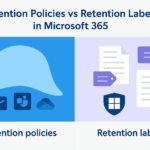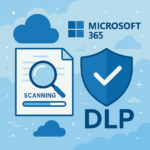As a Microsoft Purview Consultant, I’ve worked with all kinds of organisations deploying Microsoft Purview — from companies with fewer than 1,000 users to giants with over 100,000. Every project has taught me something. But one experience with a client still stands out as the most efficient and practical deployment I’ve ever seen.
And ironically — it was also the simplest setup.
Two Days a Week. That’s It.
This client booked just two days a week of my time. No full-time engagement. No big consulting package. Just focused, honest collaboration.
We sat together every week — me and their small project team — and we made decisions, one workload at a time. Sensitivity labels, Data Loss Prevention, Records Management, Custom Classifiers, SharePoint & Teams Provisioning and Governance, even securely rolling out Microsoft Forms. Everything was practical and tailored.
There were no 50-page design documents. No endless workshops. Just real discussions about how to make Purview work for them.
The Rest of the Week Was the Secret Ingredient
The rest of the week, the client went back and worked on their own. They brainstormed as a team, explored the configurations we discussed, ran small pilots — and most importantly, came back the next week with questions based on real experience.
This back-and-forth rhythm created a loop of rapid learning. Every meeting became sharper. More specific. More meaningful.
They weren’t waiting for me to give them a perfect design. They were discovering what actually worked for their organisation.
I Never Touched Their Tenant
That was a rule I followed throughout.
I didn’t implement anything. I didn’t log into their environment.
They did all of it.
And in the process, they learned exactly how each feature worked, how to troubleshoot, and how to scale it themselves.
It wasn’t just consulting — it was on-the-job training for their project team. By the end, they didn’t just have a working Purview solution — they had the confidence and skills to own it fully.
I did develop some scripts and customizations to fill gaps in Purview where none of the Out of the Box features worked.
Compare That to the Typical Approach...
So many clients I’ve seen end up with fancy Purview designs from big consulting firms.
The consultants embed themselves for months — even years. And yet, so little actually gets deployed.
Teams are stuck waiting for sign-offs, or overwhelmed by “blueprint perfection” that never gets tested in the real world.
And here’s the hard truth:
Purview isn’t something you can design on paper alone.
You have to use it, test it, break it, and learn from it.
Real Deployment = Design + Action + Feedback
This client showed what’s possible when you approach Purview practically:
Decide on a scope.
Implement it.
Learn from it.
Refine.
Repeat.
You don’t need a big budget. You don’t need an army of consultants.
You just need the right mindset and a guide who can help you make good decisions, fast.
And yes — your consultant should know more than just Purview.
They should understand SharePoint, Teams, Exchange, Power Platform, and even a bit of development knowledge — because there are gaps in Purview, and custom solutions are sometimes the way forward.
Want to Do It This Way?
If you’re planning a Microsoft Purview deployment and want to get it right without overcomplicating things — let’s talk.
I’m happy to share what worked, how we structured it, and how your team can move quickly without losing control of your own environment.




